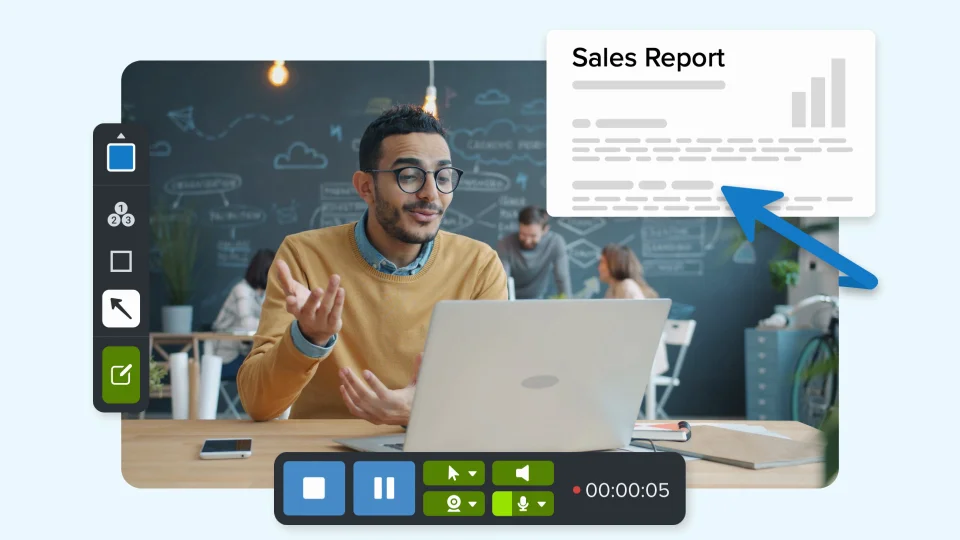Imagine breathing life into your written content with the click of a button. Envision transforming blog posts, scripts, or even marketing copy into captivating videos – all within minutes. This is the reality promised by AI text-to-video makers, a revolutionary technology transforming the way businesses and individuals create visual content. But what exactly is a text-to-video AI maker, and how does it work? Let’s delve into the fascinating world of AI-powered video creation.
From Text to Screen
At its heart, an AI text-to-video maker utilizes the power of machine learning to translate written information into video content. These AI systems are trained on vast datasets of video data, encompassing everything from film scenes to educational tutorials. By analysing this data, the AI learns to recognize visual styles, understand storytelling techniques, and even identify the emotional tone of written content.
This knowledge allows the AI to interpret a text prompt or script and generate a corresponding video sequence. Here’s a breakdown of the typical process:
- Input: Provide a written script, product description, blog post, or even a simple idea as your starting point.
- AI Processing: The AI analyses the text, identifying key elements, tone, and potential visuals.
- Video Generation: Based on its analysis, the AI selects relevant stock footage, animations, or images to represent the content visually.
- Scene Transitions & Music: The AI creates smooth transitions between scenes and adds background music to create a cohesive flow.
- Output: You receive a complete video, ready to be shared or further customized.
Beyond Script Conversion
Modern AI text-to-video makers offer a plethora of functionalities that go beyond basic script conversion:
- AI-powered Avatars: These digital characters can act as presenters, narrators, or even mascots within your video, adding a human touch without the need for actors.
- Stock Footage & Music Libraries: Access vast collections of royalty-free stock footage and music to ensure your videos are visually appealing and legally compliant.
- Automated Editing Tools: Don’t worry about tedious editing tasks. AI can handle basic transitions, captions, and background music suggestions, saving you valuable time.
- Multiple Format Export: Generate videos optimized for different platforms like social media, websites, or presentations, reaching viewers where they spend their time.
- Voiceover Integration: Incorporate a human voiceover element to add a personal touch or emphasize specific points in your video.
Benefits and Considerations
The rise of AI text-to-video makers presents a multitude of benefits for businesses and individuals alike:
- Increased Efficiency: Create professional-looking videos in a fraction of the time compared to traditional video production methods.
- Cost-Effectiveness: Ditch the expensive equipment and editing software. AI text-to-video makers provide a more affordable solution for video creation.
- Content Diversification: Breathe new life into existing content by transforming text-based materials like blog posts or white papers into engaging video content.
- Global Reach: Leverage AI translation tools integrated within some platforms to translate your video scripts and reach a wider, international audience.
However, it’s important to consider the limitations:
- Level of Customization: Some platforms offer limited control over the final video aesthetics, while others may allow for more granular customization options.
- Creative Control vs. AI Interpretation: While AI can generate visuals based on your text, it may not always capture the exact nuance or creative vision intended.
- Data Use and Privacy: Understand how the platform utilizes your data and ensure it complies with relevant data privacy regulations.
The Art of AI-Powered Video Creation
To maximize the effectiveness of AI text-to-video makers, consider these steps:
- Define Your Goals: What message are you trying to convey? Who is your target audience? Understanding your goals helps tailor your script and leverage the platform’s features effectively.
- Focus on Quality Content: While AI automates certain aspects, invest time in crafting a compelling script and choosing visuals that resonate with your audience.
- Maintain Brand Consistency: Ensure your video’s visuals, tone, and style align with your brand identity for a cohesive presentation.
- Embrace the Human Touch: Infuse your videos with a human element like voiceovers or live-action footage to add personality and build trust with your viewers.
The Future of Storytelling: Where AI and Creativity Converge
AI text-to-video makers represent a significant leap forward in the realm of video creation. As this technology evolves, we can expect exciting advancements:
- Enhanced Customization: Greater control over video aesthetics, character design, and even the AI’s “creative voice” will allow users to personalize their videos to a greater extent.
- Advanced Analytics: Platforms will provide deeper insights into video performance and audience engagement. This data can be used to refine your video creation strategy and optimize future content for increased impact.
- Integration with Marketing Tools: Seamless integration with popular marketing automation platforms and social media schedulers will streamline the workflow, allowing for efficient content distribution and campaign management.
AI text-to-video makers are not meant to replace traditional video production entirely. They are a powerful tool to empower businesses, educators, and content creators of all backgrounds to tell their stories in a compelling and engaging way. By harnessing the strengths of AI while retaining a focus on strategic content creation and the human touch, we can unlock the full potential of AI text-to-video makers and usher in a new era of accessible and impactful video storytelling.


